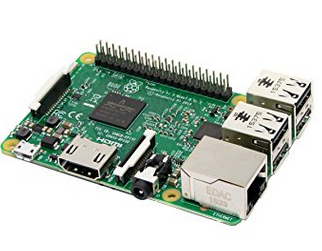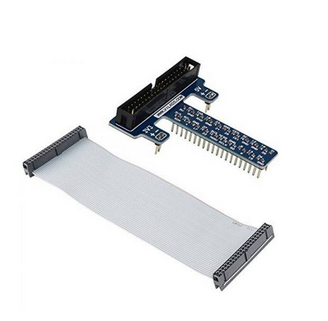
Difference: Lecture6:BringingTheRaspberryPiToLife (3 vs. 4)
Revision 42017-10-12 - uli
| Line: 1 to 1 | ||||||||
|---|---|---|---|---|---|---|---|---|

Slide 1: The Raspberry Pi and how to bring it to life | ||||||||
| Changed: | ||||||||
| < < | Lecture 5 | |||||||
| > > | Lecture 6 | |||||||
A first glimpse | ||||||||
| Line: 97 to 97 | ||||||||
Connection to bread board: The cobbler
| ||||||||
| Changed: | ||||||||
| < < | Other Rpi connections | |||||||
| > > | Other RPI connections | |||||||
| I2C is a serial bus often used in computer systems of for | ||||||||
| Line: 108 to 108 | ||||||||
| ||||||||
| Added: | ||||||||
| > > |
| |||||||
| ||||||||
| Line: 318 to 319 | ||||||||
| Go through all the options of the program and see if they make sense to you. | ||||||||
| Added: | ||||||||
| > > | Accessing the RPI remotelyOf course we can use the interfaces on the Raspberry Pi to connect a screen, keyboard and mouse and use it in stand-alone mode but we can also make use of the PC resources and access it remotely There are several ways to access the RPI remotely:
The remote Desktop
scpTo copy a file from the PC to the Pi this would be the command: scp myfile.c uli@rpi-10:exercises/solutions/exercise_2 This will copy the file “myfile.c” into the sub-directory exercises/solutions/exercise_2 on my home directory on the Pi. Of course user uli must exist on raspberry10. Instead of specifying the machine name: rpi-10 you can also give its IP address.Compiling C programs for the Raspberry PiJust like Linux on the PC, Linux on the Raspberry Pi uses the GNU C compiler gcc. The front end:
Cross-Compilation for the PiAs explained in a previous lecture we can also compile C programs for the Raspberry Pi on the PC Linux system using a cross-compiler. The cross compiler we will use is named arm-linux-gnueabihf-gcc and it is part of the tools | |||||||
| %SLIDESHOWEND%
-- | ||||||||
| Line: 337 to 407 | ||||||||
| ||||||||
| Added: | ||||||||
| > > |
| |||||||
View topic | History: r6 < r5 < r4 < r3 | More topic actions...
Ideas, requests, problems regarding TWiki? Send feedback

